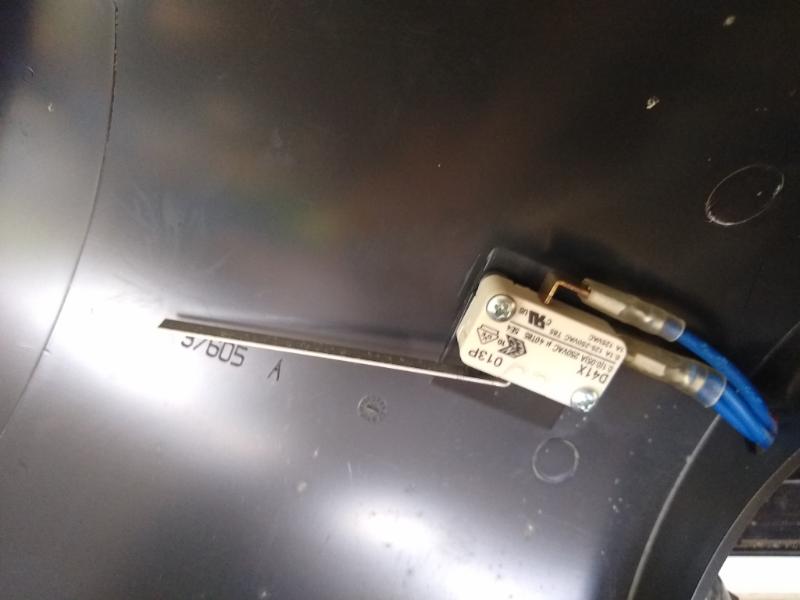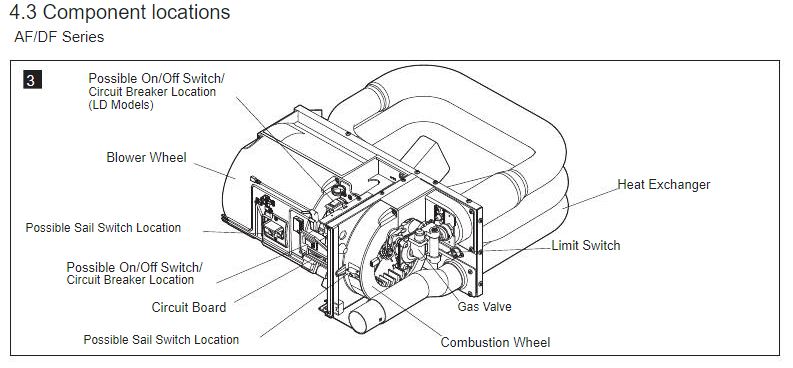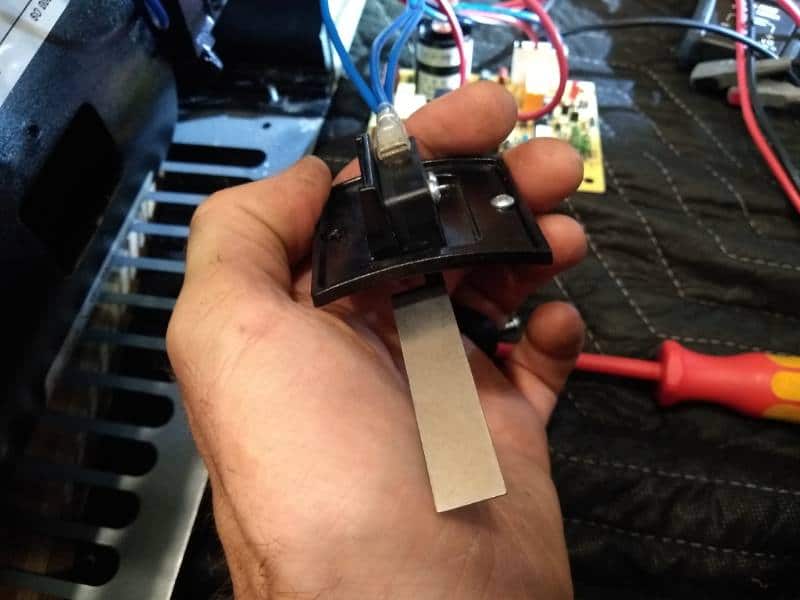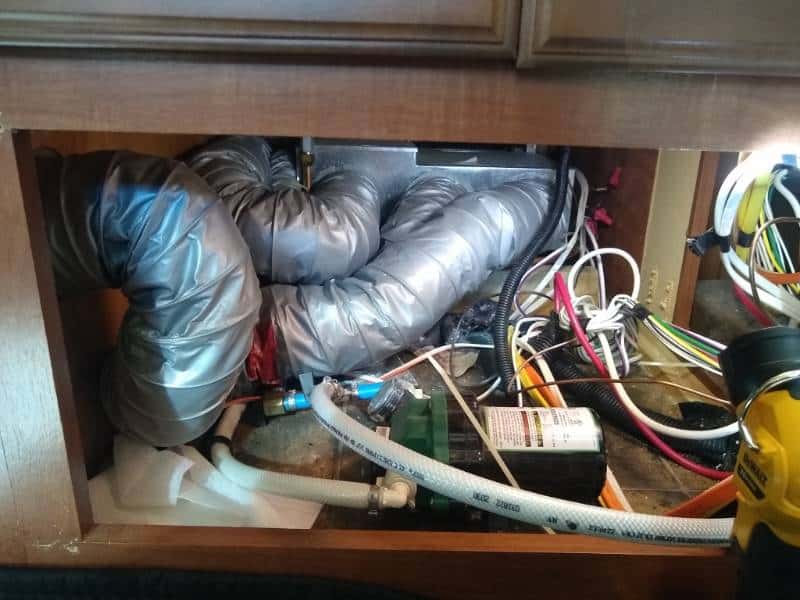“My RV furnace isn’t working!” is a common distress signal across many RV forums and Facebook groups. I’ll bet $100 that the first (and second) response to this SOS will be, “Check your sail switch. Probably needs replaced.”
Is this advice accurate? Is the furnace sail switch the suicidal culprit it’s so often made out to be? Or has this stereotyped, unloved part just been misunderstood?
What Is a Furnace Sail Switch?
A sail switch, also known as an air prover switch, is a normally open switch that closes in the presence of sufficient airflow. It looks like this (or quite similar):

Don’t overanalyze this switch. It’s a simple lever-and-fulcrum mechanism not much different than the light switch on your wall. The main difference is that instead of your finger pushing the switch, air pressure does the job. But unlike a latching light switch, a sail switch is spring-loaded so if airflow dies, the paddle springs back and the contacts open. We nerds call this a “momentary” switch.
Why Do Furnaces Have a Sail Switch?
The purpose of your RV furnace sail switch is to prove that your motor is working and your fans are moving air. Most RV furnaces have a single motor with two fans, one on each end: one for the combustion chamber, one for the heat exchanger. So your circuit board assumes that if one is spinning happily, so is the other. Here’s a snippet from the Dometic DF-Series Manual:

When your furnace first receives the call for heat from your thermostat, it runs a quick check to make sure that the sail switch is OPEN. If your sail switch is closed, then your furnace circuit board gets confused. It says, “Wait a minute! I didn’t turn on the fan motor yet. How is air moving? Is the sail switch damaged? I’d better wait for a human to figure this out.” And so your furnace will remain completely silent, although most modern furnace circuit boards will flash an error code.
Now, assuming that the sail switch is open at rest, the circuit board will fire up the motor and then check to ensure the sail switch is now CLOSED. But if your sail switch is still open, then your furnace board gets confused (again). “Huh … the fan motor should be spinning; air should be moving. Why is the sail switch not closing? I’d better wait for a human to figure this out.” And so your furnace will either shut down after about 30 seconds, or it will keep running but with no heat. Again, most modern furnace circuit boards will flash an error code.
Now I must warn you that your furnace circuit board is not very intelligent. It can’t check the sail switch individually; it can only check the safety/prover circuit that the sail switch is part of. So anything defective in that circuit – corroded connection, loose wires, broken fan blade, defective high-temp limit switch, short-to-ground, or bad circuit board itself – will throw an identical error code. So don’t trust your circuit board to correctly identify the faulty part!
Does the Sail Switch Really Go Bad All the Time?
How did the sail switch come by its reputation as such a petulant, fragile piece of equipment?
I’ll admit, the sail switch is a rather delicate instrument. The workhorse of the switch is the metal paddle, which is just a thin strip of metal. But that little metal finger is just the right size and shape for its particular furnace design (which is why you should ALWAYS replace it with the same part number!). If the paddle is bent or damaged in any way, this changes the amount of air pressure required to close the switch.

Yes, the sail switch can fail. Here are some common failure modes:
- Corrosion. Over time, the metal contacts inside the switch can become corroded from atmospheric moisture. This will either open the circuit or cause voltage to drop. Either way, your circuit board isn’t happy.
- Mechanical damage. A clumsy installer or repair technician can damage or bend the metal paddle, which changes the air pressure required to close the switch.
- Dirt. Tiny dirt particles can get lodged inside the switch housing or beneath the paddle, which can prevent it from closing.
- Pets. Sorry to be the bearer of bad news, but pet hair does awful things to your furnace. Furnace return air registers are often at or near floor level, so they serve as vacuums, sucking pet air into the furnace itself! The hair sticks to the fan wheel or sail switch itself, which restricts movement.
- Smoking/cooking. If you smoke or cook a lot in your RV, then those airborne greases can make their way into the furnace return air, where they will be deposited onto the sail switch paddle. It doesn’t take much cooking grease to weigh down a sail switch paddle and render it ineffective.
In Defense of My Friend, the Sail Switch
But I have to stand up for my little friend, the sail switch. I think it gets blamed far more than it should!
Remember, the sail switch has one job: to prove sufficient airflow. Anything – and I mean anything – that restricts airflow will be disguised as a “sail switch fault.” That means a broken fan wheel, clogged return air ducts, dust bunnies over the furnace grate, crushed ducts, pet hair, and excessive dirt – all of these things will point to the sail switch as a scapegoat.
Also, remember that your circuit board isn’t very intelligent. It can only read the voltage signal it sends out and what comes back. It can only subtract the two numbers and look for a difference; it can’t tell you what’s failing along the way. It can’t even tell you if it’s sending out the right voltage in the first place!
Personally, I think the sail switch is a popular scapegoat because it’s cheap ($20-$30) and easy to replace. It’s a tempting Hail Mary; why pay for professional repair when you could replace a $20 part yourself in an hour? … unless your furnace looks like this!

The sail switch is located inside the blower wheel housing, which is at the back of the furnace. If you’re lucky, it’s accessible through the exterior access door. If you’re unlucky and your RV manufacturer cheaped out and only gave you a vent poking through the sidewall, then you have to pull the furnace just to inspect the sail switch! (See above.) And that is a job best left to a contortionist/certified RV technician, because you’ll be disconnecting your LP gas connection as well.
Yes, the sail switch can fail. But many times, it’s just a scapegoat for the real problem. Don’t throw parts at the wall to see what sticks.
Leave a Reply